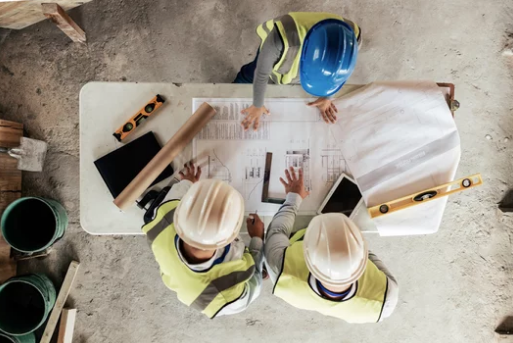Nuclear power has long been viewed as both a solution and a challenge in the global pursuit of sustainable energy. On one hand, nuclear reactors generate enormous amounts of electricity with virtually no greenhouse gas emissions during operation, making them a valuable ally in combating climate change. On the other hand, concerns about radioactive waste, environmental risks, and accident potential continue to spark debate.
Engineering plays a pivotal role in striking the balance between harnessing nuclear energy and minimizing its environmental footprint. By designing with sustainability in mind, nuclear projects can deliver reliable, low-carbon energy while safeguarding ecosystems and future generations.
This article explores the environmental impact of nuclear projects and highlights the engineering solutions that are shaping a sustainable nuclear future.
The Dual Nature of Nuclear Power
Nuclear power plants are unique in their environmental profile. Unlike fossil fuel plants, they emit virtually no carbon dioxide during operation. Yet, their environmental impact cannot be assessed in isolation—it spans the entire lifecycle, from uranium mining to decommissioning reactors.
Positive Impacts
- Low Carbon Emissions: Nuclear power is one of the lowest carbon-emitting energy sources, rivaling wind and solar.
- Energy Density: A small amount of nuclear fuel produces vast amounts of energy, reducing the need for large-scale land use.
- Reliable Base Load Power: Nuclear provides continuous electricity, complementing intermittent renewables.
Negative Impacts
- Radioactive Waste: Long-lived waste requires secure storage for thousands of years.
- Accident Risks: Though rare, accidents like Fukushima and Chernobyl have lasting environmental consequences.
- Water Use: Nuclear plants require large volumes of water for cooling, which can affect local ecosystems.
- Uranium Mining: Extracting and refining uranium impacts land, water, and local communities.
Engineering for Sustainability in Nuclear Projects
Advanced Reactor Designs
Next-generation reactors, including Small Modular Reactors (SMRs) and Generation IV designs, are engineered with sustainability at their core. These reactors aim to reduce waste, improve fuel efficiency, and incorporate passive safety systems that minimize environmental risk.
Closed Fuel Cycles
Recycling spent fuel through reprocessing technologies reduces waste volumes and recovers usable materials. This approach not only lowers the environmental footprint but also maximizes resource efficiency.
Water Conservation Strategies
Engineers are developing cooling technologies that reduce water consumption and thermal pollution. Air-cooled condensers and hybrid cooling systems help nuclear plants adapt to water-scarce regions while lowering ecological impacts.
Green Construction Practices
Modern nuclear projects integrate eco-friendly construction methods, minimizing land disruption, using sustainable materials, and restoring local habitats after construction.
Mitigating Environmental Risks
Accident Prevention and Resilience
Engineering resilience is critical to preventing environmental disasters. Defense-in-depth strategies, passive safety systems, and seismic-resistant designs all help protect against accidents and natural disasters.
Waste Management Innovations
Deep geological repositories, vitrification, and advanced encapsulation technologies provide safer long-term waste solutions. Emerging concepts like transmutation may further reduce environmental hazards by shortening the lifespan of radioactive isotopes.
Decommissioning and Site Restoration
At the end of a nuclear plant’s lifecycle, engineering teams focus on safe decommissioning. This includes dismantling reactors, managing waste, and remediating land for future use—ensuring minimal long-term environmental harm.
Nuclear Power and Climate Change
One of nuclear energy’s strongest arguments is its role in decarbonization. Unlike coal or natural gas plants, nuclear reactors do not emit greenhouse gases during operation, making them an essential part of climate strategies. Many countries see nuclear as a complement to renewables, providing stable electricity when the sun isn’t shining or the wind isn’t blowing.
However, sustainability demands that nuclear expansion be pursued responsibly, with careful attention to environmental safeguards, waste solutions, and community trust.
Global Case Studies
- Finland’s Onkalo Repository: A pioneering deep geological storage facility designed to isolate nuclear waste for 100,000 years, showcasing engineering excellence in environmental protection.
- France’s Nuclear Fleet: Through reprocessing and recycling, France reduces nuclear waste volumes while maintaining one of the world’s lowest carbon electricity systems.
- Japan’s Fukushima Recovery: Following the 2011 disaster, engineers developed advanced water treatment systems to minimize radioactive discharge, highlighting lessons in resilience and remediation.
Public Perception and Sustainability
Sustainability is not just technical—it’s social. Public perception plays a key role in determining the acceptance of nuclear projects. Transparent communication, community involvement, and visible commitment to environmental stewardship are essential for long-term success.
The Future of Nuclear Sustainability
Looking ahead, nuclear engineering will increasingly focus on:
- Advanced fuel cycles that reduce waste.
- Hybrid energy systems combining nuclear with renewables.
- Eco-friendly construction and decommissioning practices.
- Smart monitoring systems that ensure real-time environmental safety.
With these innovations, nuclear energy can become a more sustainable and publicly trusted part of the global energy mix.
Conclusion
The environmental impact of nuclear projects is complex—balancing the promise of clean energy with the challenges of waste, water use, and safety. Engineering, however, is steadily reshaping nuclear power into a more sustainable option.
From advanced reactor designs to innovative waste management and ecosystem-conscious construction, engineers are building nuclear systems that respect both people and the planet. If pursued with care, nuclear energy can play a pivotal role in achieving a sustainable, low-carbon future—proving that with the right engineering, even the most powerful technologies can coexist with environmental stewardship.
Also Read :
